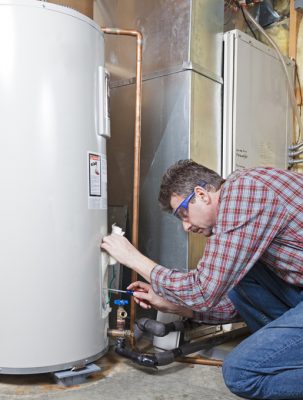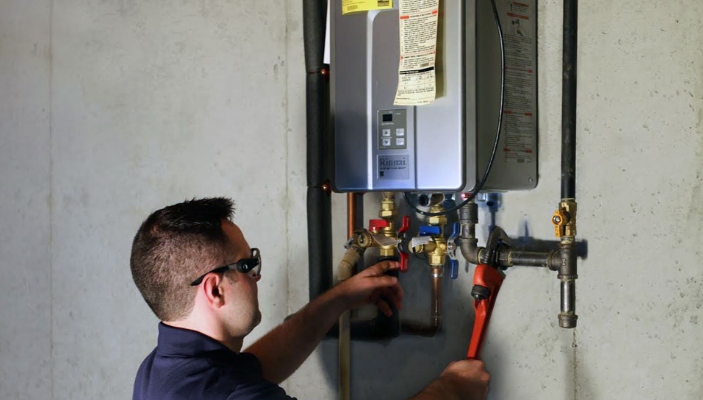Easy Ways to Maintain Your Home's Hot Water System Effectively
Easy Ways to Maintain Your Home's Hot Water System Effectively
Blog Article
The article which follows about Water Heater Maintenance Tips You Can't Afford to Forget is highly compelling. You should take a peek.

Warm water is vital for daily comfort, whether it's for a revitalizing shower or washing meals. To ensure your warm water system runs successfully and lasts longer, regular upkeep is essential. This post offers practical pointers and insights on how to keep your home's hot water system to stay clear of disturbances and expensive repair work.
Intro
Preserving your home's warm water system may seem challenging, yet with a few simple actions, you can ensure it runs smoothly for many years to find. This guide covers whatever from understanding your warm water system to do it yourself maintenance ideas and understanding when to hire specialist assistance.
Relevance of Preserving Your Warm Water System
Regular maintenance not only expands the life expectancy of your warm water system but additionally ensures it runs effectively. Disregarding maintenance can cause decreased effectiveness, greater energy costs, and even early failing of the system.
Signs Your Warm Water System Demands Maintenance
Understanding when your hot water system needs focus can prevent major problems. Keep an eye out for signs such as inconsistent water temperature, odd sounds from the heater, or rustic water.
Recognizing Your Warm Water System
Before diving right into upkeep tasks, it's valuable to recognize the standard components of your hot water system. Normally, this includes the water heater itself, pipes, anode poles, and temperature level controls.
Monthly Maintenance Tasks
Regular month-to-month checks can aid catch minor issues before they intensify.
Purging the Hot Water Heater
Flushing your water heater removes sediment accumulation, enhancing performance and lengthening its life.
Monitoring and Changing Anode Rods
Anode poles protect against deterioration inside the tank. Inspecting and replacing them when worn out is vital.
Evaluating and Readjusting Temperature Level Setups
Readjusting the temperature level setups makes certain ideal performance and safety.
DIY Tips for Maintenance
You can perform several maintenance jobs yourself to keep your warm water system in leading problem.
Looking for Leakages
On a regular basis check pipes and connections for leaks, as these can lead to water damages and greater costs.
Checking Stress Alleviation Valves
Evaluating the pressure relief valve guarantees it operates properly and avoids too much stress buildup.
Shielding Pipes
Shielding warm water pipelines lowers warm loss and can save power.
When to Call an Expert
While do it yourself upkeep is useful, some issues require specialist experience.
Facility Problems Calling For Expert Help
Instances include major leakages, electrical problems, or if your water heater is continually underperforming.
Regular Professional Upkeep Perks
Professional upkeep can include extensive inspections, tune-ups, and making certain conformity with safety criteria.
Conclusion
Normal upkeep of your home's hot water system is crucial for effectiveness, longevity, and expense savings. By complying with these tips and knowing when to look for professional assistance, you can ensure a trusted supply of hot water without unanticipated disruptions.
How to Maintain an Instant Hot Water Heater
Before tinkering with your hot water heater, make sure that it’s not powered on. You also have to turn off the main circuit breaker and shut off the main gas line to prevent accidents. Also turn off the water valves connected to your unit to prevent water from flowing into and out of the appliance. 2. When you’re done, you have to detach the purge valves’ caps. These look like the letter “T†and are situated on either side of the water valves. Doing so will release any pressure that has accumulated inside the valves while at the same time avoid hot water from shooting out and burning your skin. 3. When the purge valves’ caps are removed, you have to connect your hosing lines to the valves. Your unit should have come with three hoses but if it didn’t, you can purchase these things from any hardware or home repair shops. You can also get them from retail stores that sell water heating systems. Read the user’s manual and follow it to complete this task properly. When the hosing lines are connected, open the purge port’s valves. 4. You should never use harsh chemical cleaners or solutions when cleaning your unit. Make use of white vinegar instead. It should be undiluted and you’ll probably use about 2 gallons. 5. Now flush your water heater. This task should probably take about 40 minutes. We can’t give you specific directions for this because the procedure is carried out depending on the type, model and brand of your heater. With that being said, refer to the user’s manual. 6. When you’re done draining the unit, you have to turn off the purge port valves again. Remove the hosing lines that you earlier installed on each of the water valves. Put the valve caps (purge port) back in their respective places and be very careful so as not to damage the rubber discs that are found inside these caps. 7. Now that everything’s back in place, check your user’s manual again to find out how to reactivate your water heating system. 8. Once it is working, turn one of your hot water faucets on just to let air pass through the heater’s water supply pipes. Leave the tap on until water flows smoothly out of it. https://www.orrplumbing.com/blog/2014/september/how-to-maintain-an-instant-hot-water-heater/

I was made aware of that article about Tips For Maintaining Your Hot Water Heater through a pal on our other web page. If you enjoyed our blog post plz make sure you remember to share it. I thank you for your readership.
Book 24/7 Report this page